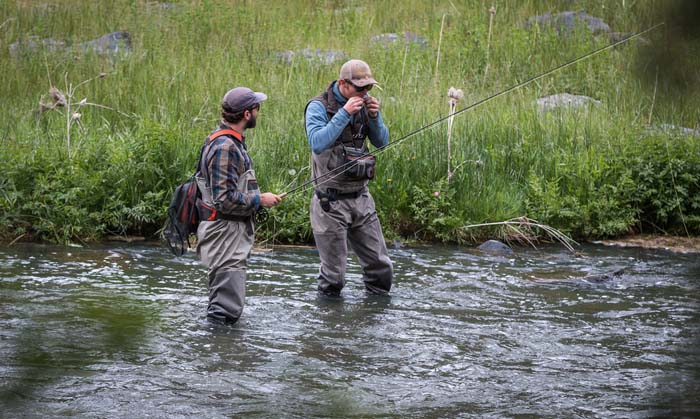By Skip Clement
[dropcap]I[/dropcap]can blame her; she gave him the wrong advice. In trout country of Western North Carolina, I overheard an experienced fly shop employee and respected part-time trout guide, apparently not familiar with big animal angling, tell a Florida Keys bound tarpon angler that he didn’t need a Bimini Twist to connect backing to fly line on his new reel. The customer had asked for it.
Fortunately, the owner intervened before winding began. The slated for the Keys angler walked out with a Bimini connecting backing to fly line (loop to loop) on his new 3Tand T-100 Big Game Fly Reel. And he got a Perfection Loop lesson from the fly shop staffer who made the sale and handed-out the misinformation – all ended well.
Connecting?
No matter what you choose to connect lines with, any one failed knot will be the final arbiter for the acquaintance you had with the fish you hooked. If the knot is a bad choice, tied poorly, or you selected inferior material (line) you stand to lose.
The further up the line weight scale you go the more impactful stress on all lines and all their connections will be. A 3-weight rod, 3-weight fly line, and leader set up for 20-inch long trout is neither a test for reel, rod, fly line, or leader (assuming appropriate leader material), but “one” poor knot and the fish is off.

The upper image is a Spider Hitch and below, a Bimini Twist. Both knots tied and photographed by the IGFA. The IGFA rates the Bimini as a 95% knot and a 100% knot by Rio Products. The Spider Hitch was not rated, but it is reported to be an 80% knot. The percentages are a break strength caparison to the single line pound test rating of which the knot is a part.
When you get into bonefish, Chinook salmon, then tarpon and beyond, all your selections; fly rod and reel to the knot that connects the fly are pivotal with regard to staying attached. While the knot selections are many, backing to fly line to leader involves, collectively, avoiding chaffing, having shock absorption, and making sure that the connection has a corresponding or near similar pound test breaking strength. The exception, IGFA rigged where the tippet limit is 20-pound test.
The best connections create a loop to loop – the exception being internal sections of the leader, backing to reel, and more than occasionally tippet or shock tippet to the fly.
The list for loop knots is not too long, but too long to list here
The loop knots that come to mind, especially the ones I’ve experienced are all found on the following RIO Products video and MC’d by the companies high profile nice guys that do know their business – Zach Dalton and RIO head guy Simon Gawesworth.
The loop knot not covered in RIO Products’ video is the Spider Hitch, so here’s a link . . . BTW: It’s way faster and better to tie it the way shown in this video.
Featured Image: “Tying one on” – Fly fishing on the Crooked Wild and Scenic River, near the Big Bend Campground, June 11, 2017, by Greg Shine, BLM.
[vimeo id=”120605167″ width=”620″ height=”360″]

